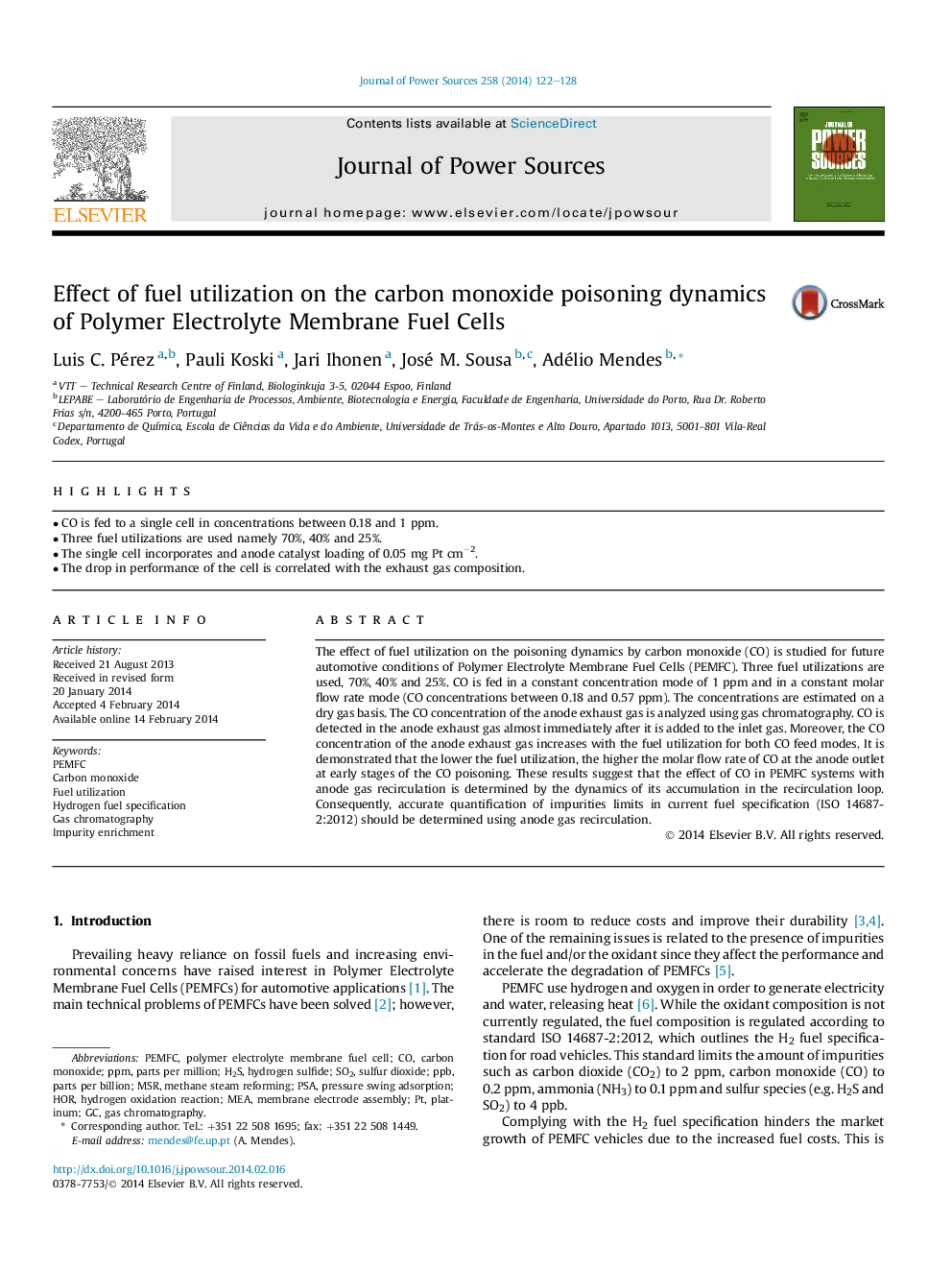| Article ID | Journal | Published Year | Pages | File Type |
|---|---|---|---|---|
| 7736571 | Journal of Power Sources | 2014 | 7 Pages |
Abstract
The effect of fuel utilization on the poisoning dynamics by carbon monoxide (CO) is studied for future automotive conditions of Polymer Electrolyte Membrane Fuel Cells (PEMFC). Three fuel utilizations are used, 70%, 40% and 25%. CO is fed in a constant concentration mode of 1Â ppm and in a constant molar flow rate mode (CO concentrations between 0.18 and 0.57Â ppm). The concentrations are estimated on a dry gas basis. The CO concentration of the anode exhaust gas is analyzed using gas chromatography. CO is detected in the anode exhaust gas almost immediately after it is added to the inlet gas. Moreover, the CO concentration of the anode exhaust gas increases with the fuel utilization for both CO feed modes. It is demonstrated that the lower the fuel utilization, the higher the molar flow rate of CO at the anode outlet at early stages of the CO poisoning. These results suggest that the effect of CO in PEMFC systems with anode gas recirculation is determined by the dynamics of its accumulation in the recirculation loop. Consequently, accurate quantification of impurities limits in current fuel specification (ISO 14687-2:2012) should be determined using anode gas recirculation.
Keywords
Related Topics
Physical Sciences and Engineering
Chemistry
Electrochemistry
Authors
Luis C. Pérez, Pauli Koski, Jari Ihonen, José M. Sousa, Adélio Mendes,
